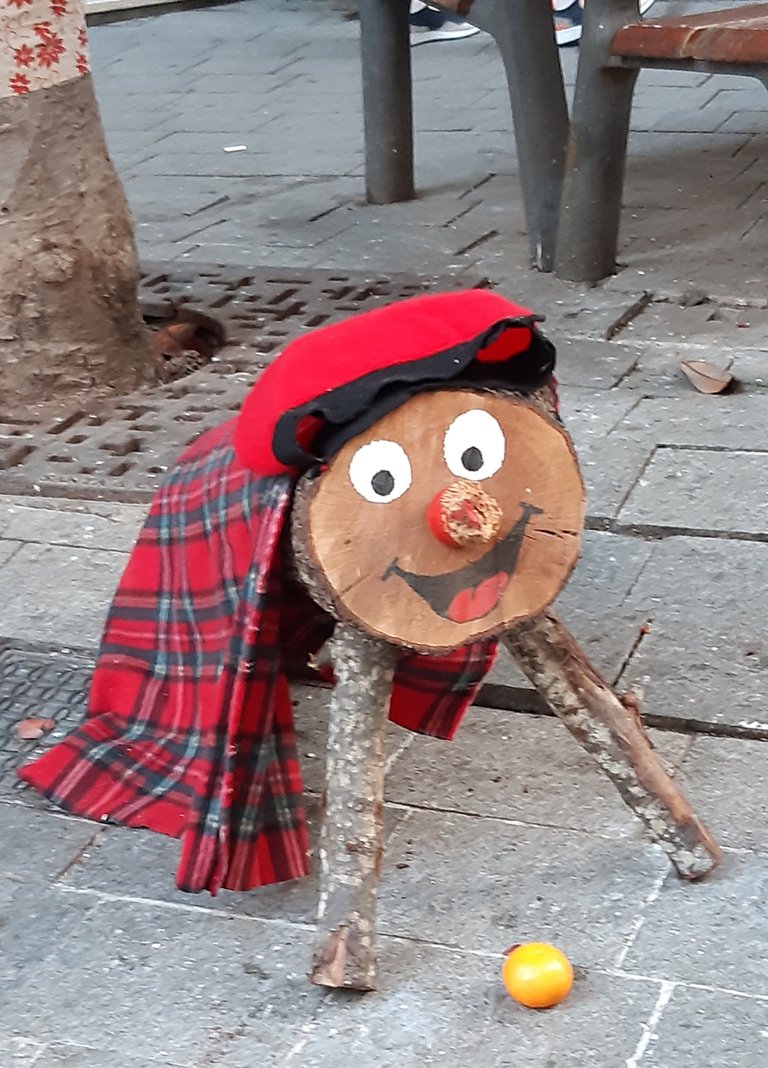
One of the most wonderful things about Christmas is that in every part of the world there are traditions that -in some cases- accompany its inhabitants for years and centuries.
I live in Catalonia because love brought me to these lands many years ago. Interacting with someone who does not have our nationality, or our same customs enriches a lot. Differences open our minds and make us discover new ways to enjoy life. My husband is Catalan and today I will tell you how Catalonia celebrates Christmas.
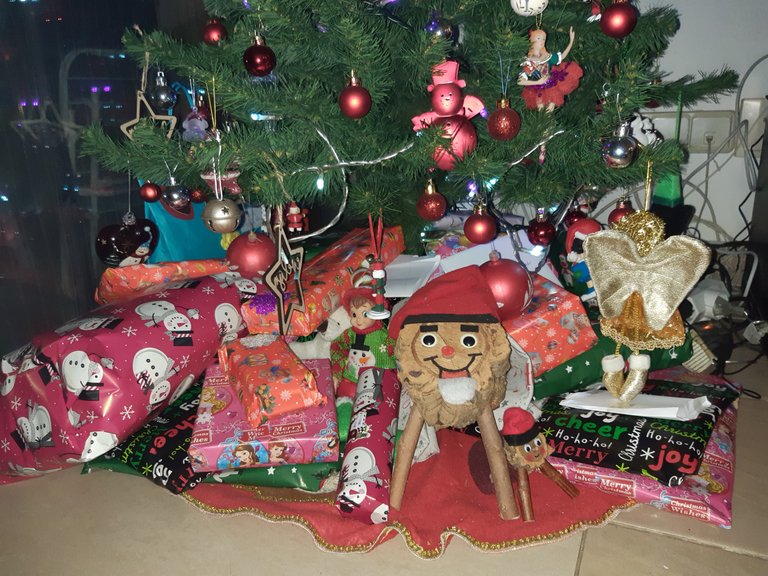
En toda España la fecha en que los niños reciben regalos en el seis de enero (Día de Reyes) y, aunque aquí también se cumple esa tradición, los catalanes poseen otra que tiene muchos años en su cultura. Antes del veinticuatro de diciembre (esto depende de cada familia, algunas lo hacen pocos días antes y otras a comienzos del mes) se va a la montaña a buscar un tronco. El tamaño depende del gusto de la gente pero debe ser grueso y un poco grande. El tronco (que en catalán se llama Tiò) se lleva a casa y durante varios días se le da comida (generalmente cáscaras de mandarina, pero los niños terminan dándole ¡todo lo que encuentran!), los colocan en un lugar especial del salón y los tapan con una mantica para el frío. Cada día se le ofrece comida porque la tradición indica que, mientras más coma, más regalos traerá. El alimento se coloca cada noche antes de acostarse y al día siguiente los niños se llenan de felicidad al ver que “el tiò se ha comido lo que le han puesto”. Confieso que nunca dejará de sorprenderme la ilusión y la inocencia de los niños. Los adultos deberíamos resetearnos y recuperar ese sentimiento. Después de varios días alimentando al personaje, la noche del veinticuatro de diciembre se le canta una canción y se le da golpecitos con un palo, en ese momento el tronco “caga” regalos. ¡Sí, así como suena, caga regalos!. Por esta razón la festividad se llama: “Caga Tiò” (el tronco que caga, sería la traducción). Cada vez que el tronco pone un regalo se debe limpiar el palo. En el momento en que los niños se alejan para lavarlo, los padres, abuelos o tíos colocan otro regalo debajo de la manta y, al llegar los niños a repetir el canto y a dar golpes, vuelve a aparecer un obsequio. Esto se repite tantas veces como deseen los familiares, todo depende de la cantidad de regalos que quieran que reciban los niños.
Throughout Spain the date on which children receive gifts is on January 6 (Three Kings Day) and, although this tradition is also fulfilled here, Catalans have another that has many years in its culture. Before the Twenty-fourth of December (this depends on each family, some do it a few days before and others at the beginning of the month) they go to the mountain to look for a log. The size depends on people’s taste but it should be thick and a little big. The trunk (which in Catalan is called Tiò) is taken home and for several days it is given food (usually tangerine peels, but the children end up giving it everything they find!), put them in a special place in the living room and cover them with a blanket for the cold. Every day you food is offered because tradition indicates that the more It eats, the more gifts It will bring. The food is placed every night before going to bed and the next day the children are filled with happiness to see that "The Tiò has eaten what they have put". I confess that I will never cease to be surprised by the illusion and innocence of children. We, as adults should reset ourselves and recover that feeling. After several days feeding the character, on the night of December 24 a song is sung, and children tapped it with a stick, at which time the trunk "shits" gifts. Yes, as it sounds, shits gifts!. For this reason the holiday is called: "Caga Tiò" (the log that shits, would be the translation). Every time the log puts a gift, the stick should cleaned. At the moment when the children leave to wash it, their parents, grandparents uncles or aunts place another gift under the blanket and, when the children arrive back to repeat the song and give blows, a gift reappears. This is repeated as many times as family members want, it all depends on how many gifts they want children to receive.
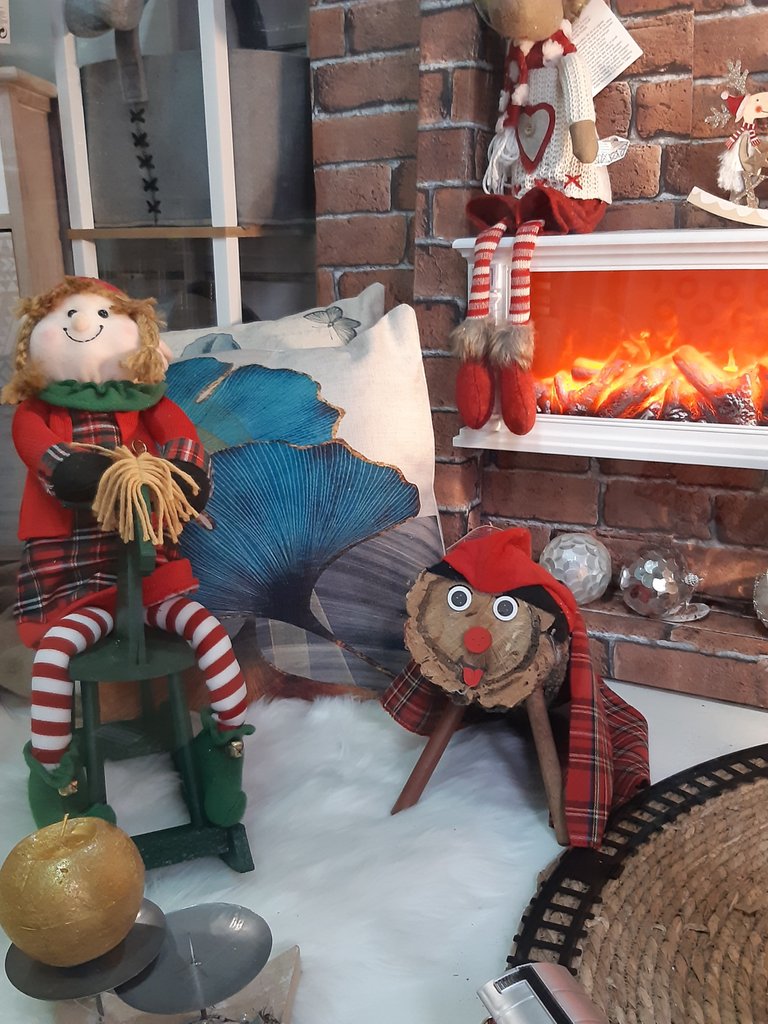 | 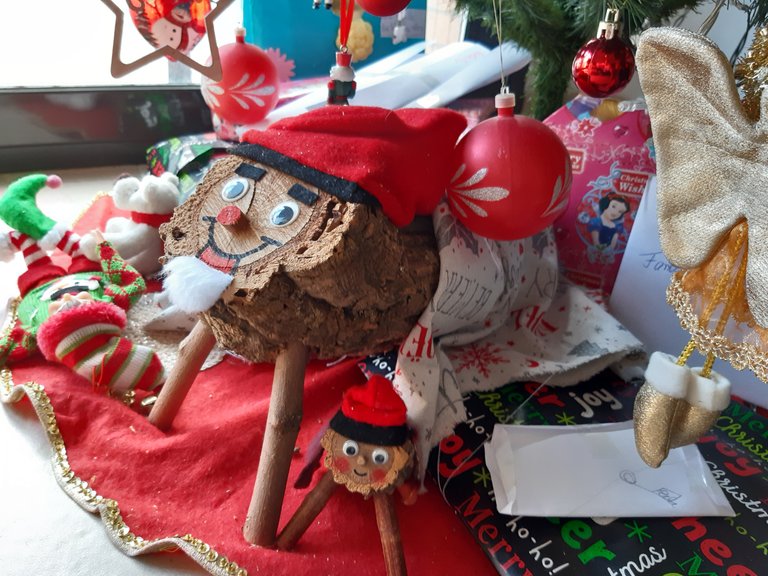 |
|---|
Mi suegra, una señora de casi ochenta años me ha contado que, en su niñez el Tiò solo ponía de regalos turrones, actualmente aparecen hasta bicicletas. En el caso de mi hija el tronquito solo le regala lápices, gomas de borrar, libros para leer o colorear y pinturas de labios de las princesas Disney. Los regalos grandes los trae el Niño Jesús (según mi tradición).
My mother-in-law, an almost eighty-year-old lady, has told me that, in her childhood, The Tiò only gave nougat gifts, nowadays even bicycles appear. In the case of my daughter, the tree trunk only gives her pencils, erasers, books to read or color, and Disney princess lipsticks. The big gifts are brought by the Baby Jesus (according to my tradition).
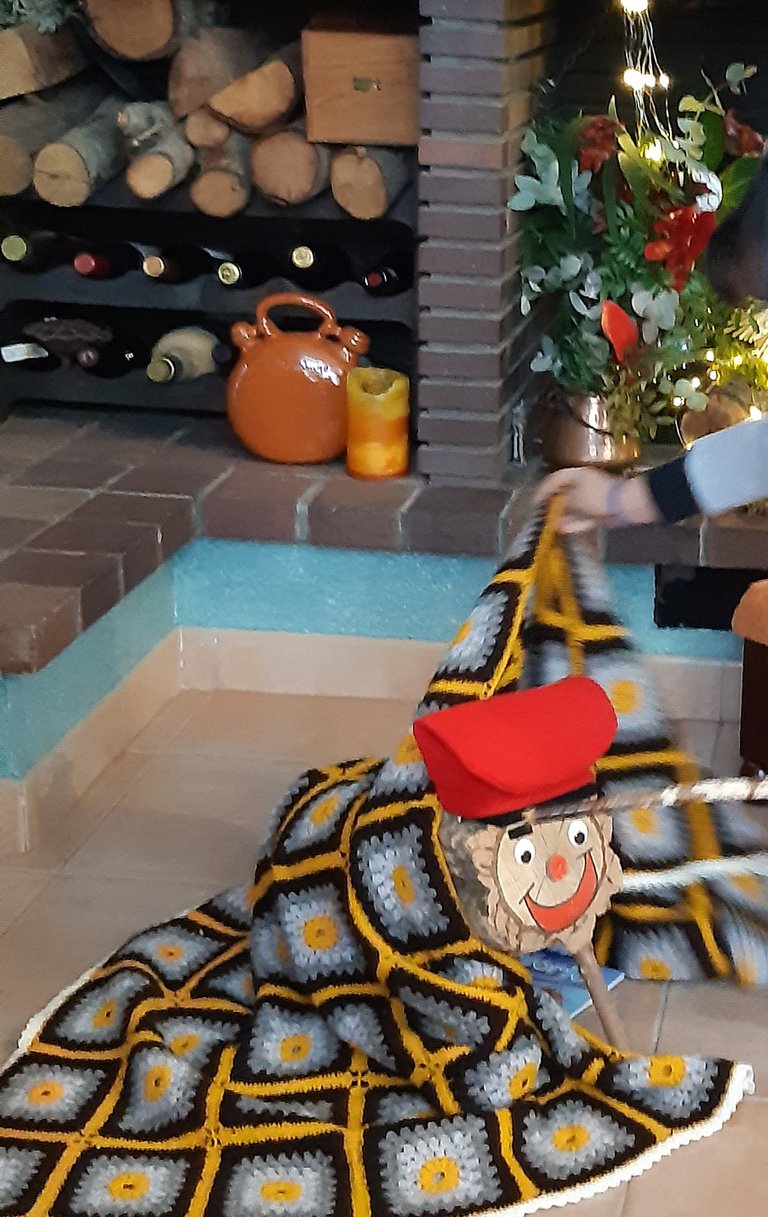
Al igual que el tronco ha ido cambiando el tipo de regalos que le pone a los niños, de esa misma forma ha cambiado el look. Antes era un simple tronco traído de la montaña, ahora los venden desde finales de noviembre en todas las tiendas de decoraciones, jugueterías y mercadillos. Tiene ojos, una gorra típica catalana llamada “barretina” de color rojo y una gran sonrisa. Vienen de distintas formas: pequeños, medianos, grandes, algunos con la manta incorporada y otros sin ella. También los encuentras como imanes para la nevera, con chupones en la boca simulando un bebé o sacando la lengua, las personas compran el que desean, pero todos los tienen en casa y los alimentan esperando la Nochebuena.
Just as the trunk has been changing the type of gifts it gives to children, so has the look. It used to be a simple log brought from the mountain, now they sell them from the end of November in all the decoration shops, toy stores and markets. He has eyes, a typical Catalan red cap called "barretina" and a big smile. They come in different forms: small, medium, large, some with the blanket incorporated and others without it. People can also find them as fridge magnets, with pacifiers in their mouth simulating a baby or sticking out their tongue, people buy the one they want, but they all keep them at home and feed them waiting for Christmas Eve.
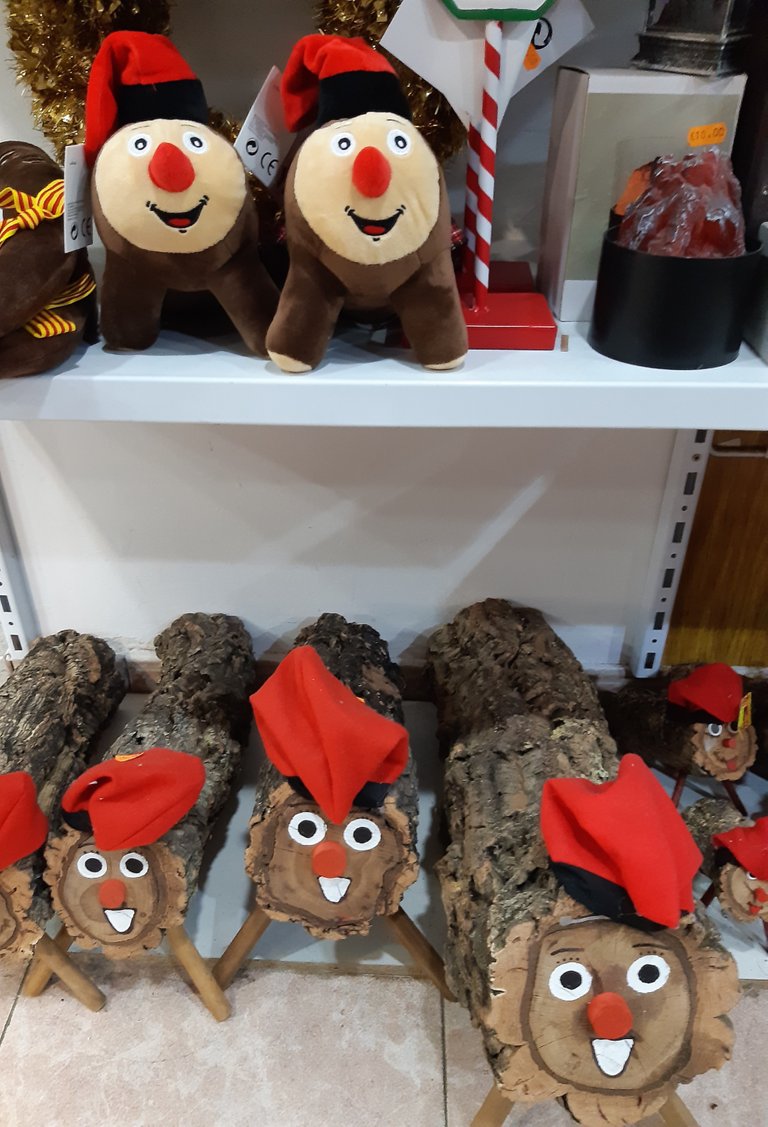
En todas las ciudades de Cataluña, tanto en las grandes como Barcelona y Girona, como en las medianas o pequeñas, a través de toda la geografía catalana encuentras un Tiò en las plazas mayores, en los ayuntamientos (alcaldías), en los centros comerciales, en los colegios o en los puntos turísticos por excelencia. A los niños los hacen “cagar al tiò” en los colegios antes de terminar las clases por navidad. En los ayuntamientos de cada pueblo, inscriben a los niños residentes de la zona y realizan la tradición de golpear y cantar al Tiò. Siempre reciben un regalo que gestiona el ente gubernamental.
Es muy especial ver a los niños ilusionados al encontrarse un Tiò por la calle, piden fotos, los acarician, es un símbolo de la Navidad.
In all the cities of Catalonia, both in the big ones like Barcelona and Girona, as in the medium or small ones, throughout the Catalan geography you find a Tiò in the main squares, in the town halls (mayors), in the shopping centers, in schools or tourist spots par excellence. Kids get "shit on Tiò" at school before they finish school for Christmas. In the municipalities of each village, they register the children living in the area and carry out the tradition of beating and singing the Tiò. They always receive gifts from the government agency.
It is very special to see the excited children when they find a Tiò on the street, they ask for photos, they caress them, and it is a symbol of Christmas.
No puedo negar que he asumido esta costumbre con mucho agrado, me resulta original, divertida, que habla de una región, de las tradiciones de un sitio, de su cultura y su historia. Mi hija continúa con la tradición que durante años hicieron su papá, sus abuelos y todos sus antepasados paternos. Ese sentimiento que traspasa años y generaciones es de un valor incalculable. Yo misma siendo extranjera he enseñado lo que se hace en mi país en las fechas decembrinas y mi esposo valora muchas de mis costumbres también. Nuestra hija es una fusión de dos mundos, de costumbres que forman un carácter y ese es uno de los pilares que marcarán siempre su vida.
La canción que se le canta al Tiò puede variar en algunas palabras pero, aquí les dejo la más común:
“Caga tió
avellanes i torrons
no caguis arengades
que
són massa salades
caga torrons que són més bons
Caga tió
avellanes i torrons
si no vols cagar et donaré un cop de bastó,
ben fort, ben fort”
¡Por unas navidades llenas de paz, tolerancia, entendimiento y respeto para todos!.
I cannot deny that I have adopted this custom with great pleasure, I find it original, fun, that speaks of a region, the traditions of a place, its culture and its history. My daughter continues with the tradition that her father, her grandparents and all her paternal ancestors did for years. That feeling that crosses years and generations is of incalculable value. Being a foreigner myself, I have taught what is done in my country during the holidays and my husband values many of my customs as well. Our daughter is a fusion of two worlds, of customs that form a character and that is one of the pillars that will always mark her life.
The song that is sung to Tiò may vary in some words, but here it is the most common:
"Caga Tiò
hazelnuts and torrons
don't shit harangues
what are massa salades
caga torrons that are more bons
Caga Tiò
hazelnuts and torrons
if you don't take a shit and
I'll donate a cup of bastó, ben fort, ben fort”
For a Christmas full of peace, tolerance, understanding and respect for all!
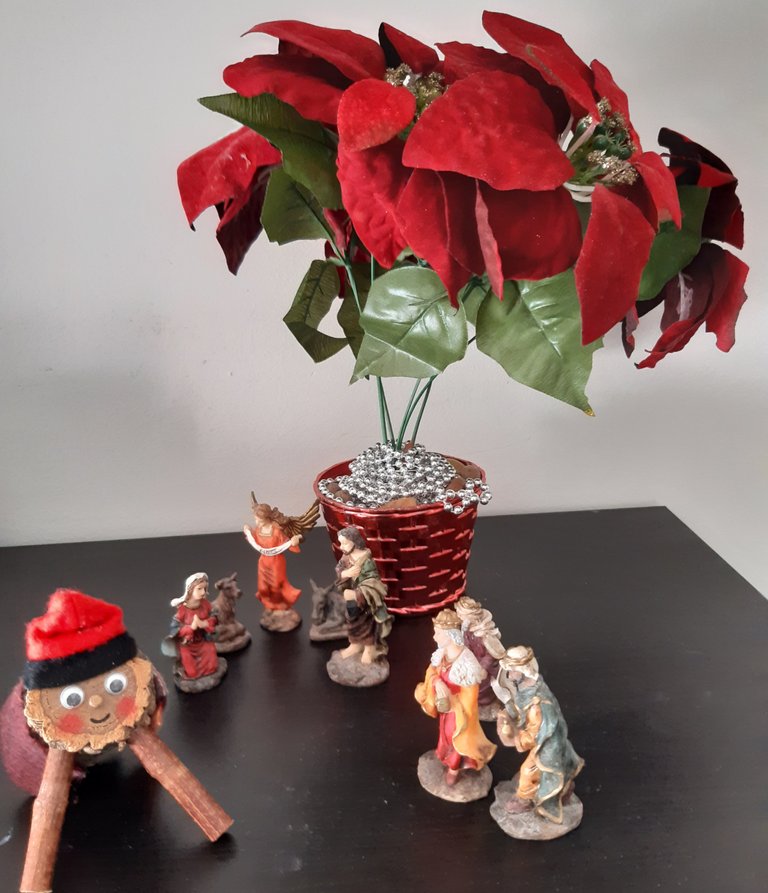 |  |
|---|
Todas las fotos son de mi propiedad.
All the pictures used are personals.
Muy interesante!!
Sé que ese tronco existe, el Caga Tío, pero no sabía todo esto, toda la tradición. Muy interesante. Gracias por le explicación, de alegraste el día :)
Que bueno que ya lo conocías. Me agrada haber mostrado un poquito más de esta tradición y que te haya gustado. Saludos
Vaya... Mira que viviendo en España y no muy lejos de Cataluña no conocía esta tradición, ni me imaginaba que tuviera una canción y todo.
Ha estado muy interesante el post, tiene un poco de todo, historia, tradición y humor.
Un saludo y felices fiestas
¡Saludos para ti y que pases una bonitas fiestas!
Congratulations @everivaspazos! You have completed the following achievement on the Hive blockchain And have been rewarded with New badge(s)
Your next target is to reach 1500 upvotes.
You can view your badges on your board and compare yourself to others in the Ranking
If you no longer want to receive notifications, reply to this comment with the word
STOPCheck out the last post from @hivebuzz:
Support the HiveBuzz project. Vote for our proposal!